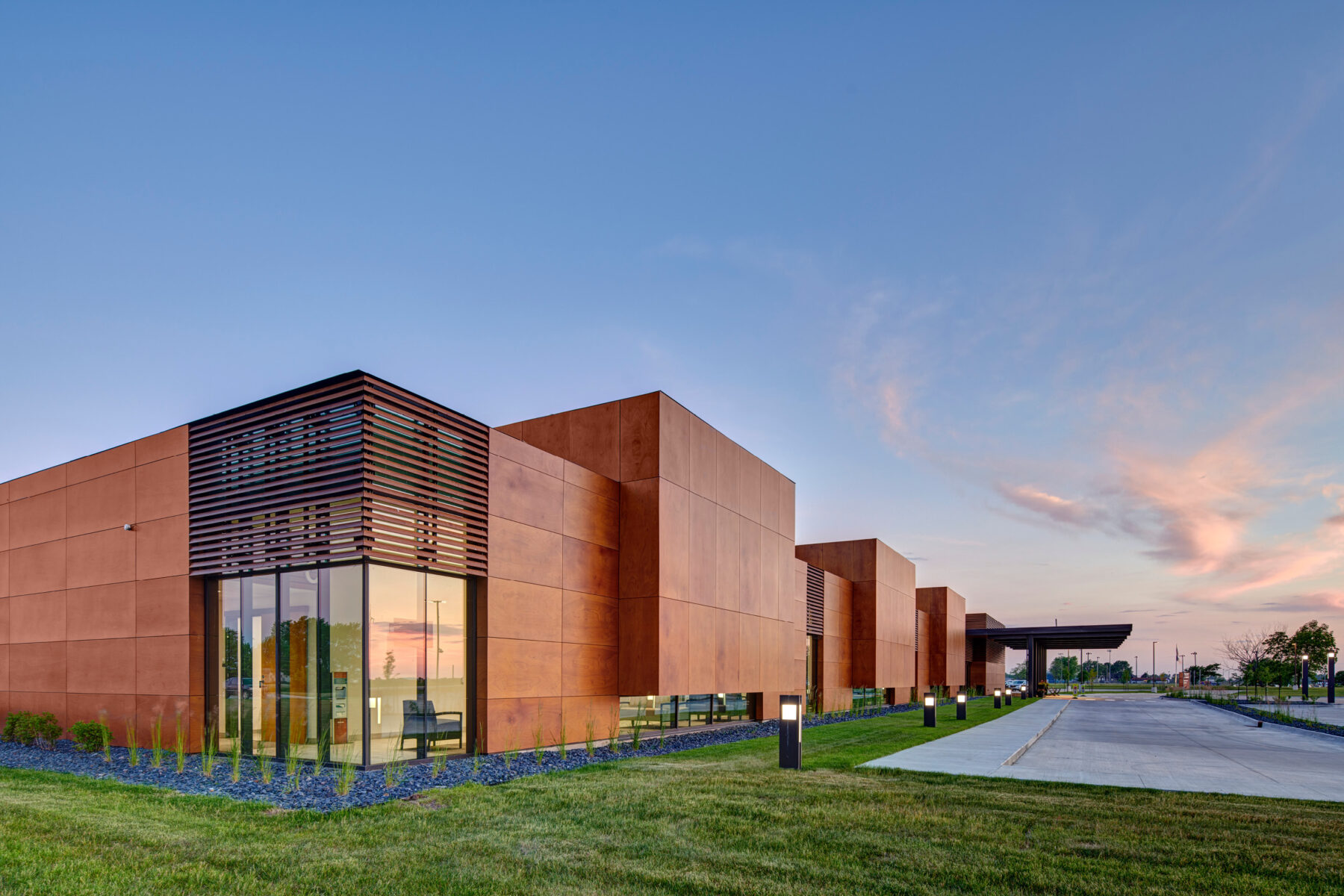
In the case of rural healthcare facilities, architecture can make the difference between thriving and merely surviving. Rural and critical access hospitals face unique obstacles. Limited resources and services can make it hard to recruit staff and provide high-quality, accessible healthcare services to their communities. It often takes innovative solutions to address these challenges. The Monroe County Hospital and Clinics (MCHC) renovation and expansion show the transformative power of architecture in revolutionizing rural healthcare facilities.
Within the last few years, MCHC, located in Albia, Iowa, faced increasing demands. Their existing structure no longer met the needs of staff and patients. It also lacked the resources needed to expand its services and team. INVISION worked with MCHC to craft a 21,500-foot expansion that prioritizes the holistic well-being of all. Enhancing patient and staff experience was a top priority when making design decisions.
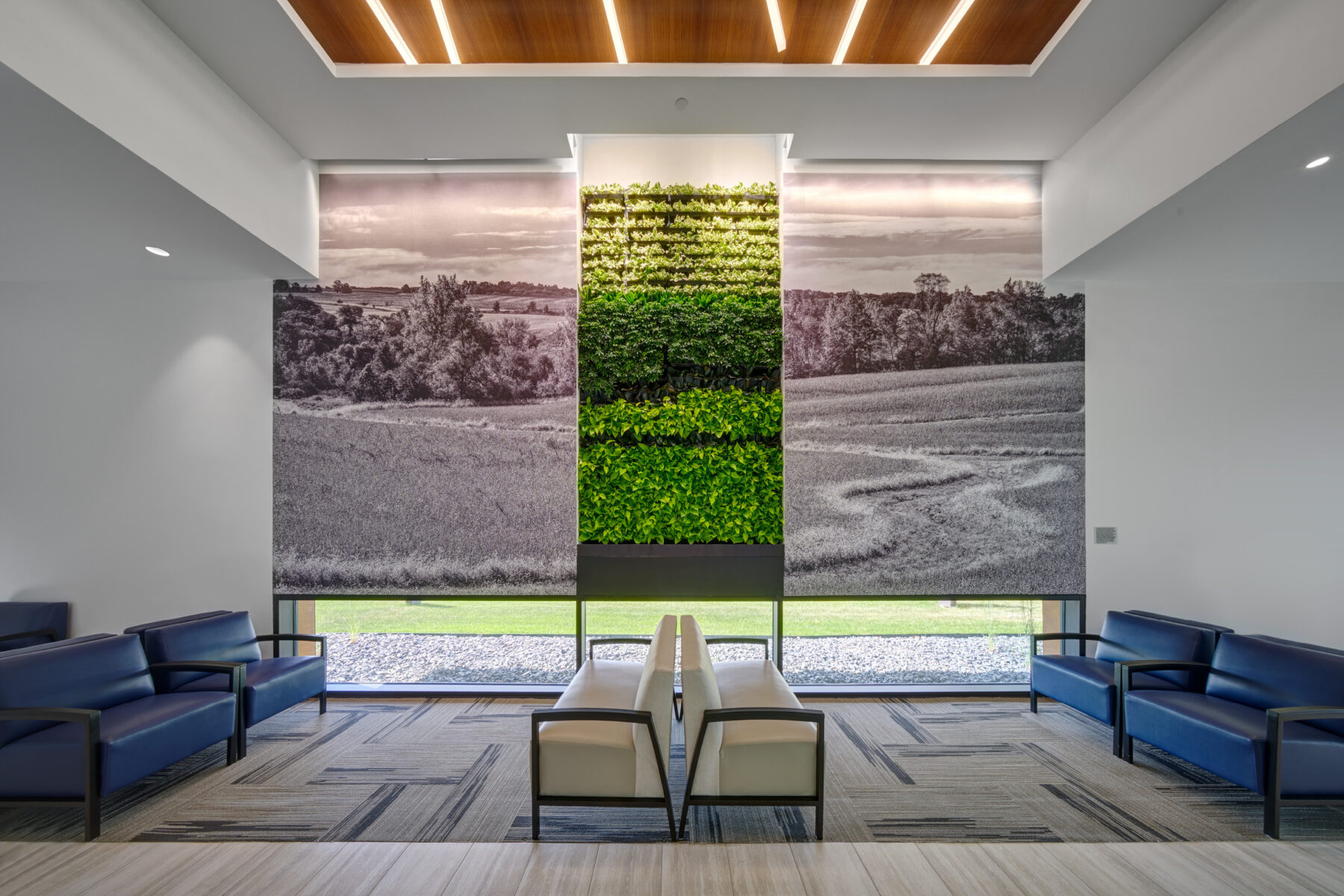
When visitors step inside, they see living walls bursting with greenery. Large-scale photographs of the local community seamlessly blend with the natural elements, creating a soothing atmosphere that feels like home. These vibrant installations not only look nice but also serve a practical purpose. Live plants increase air quality, contributing to a healthier indoor environment. They also reduce stress levels and boost productivity.
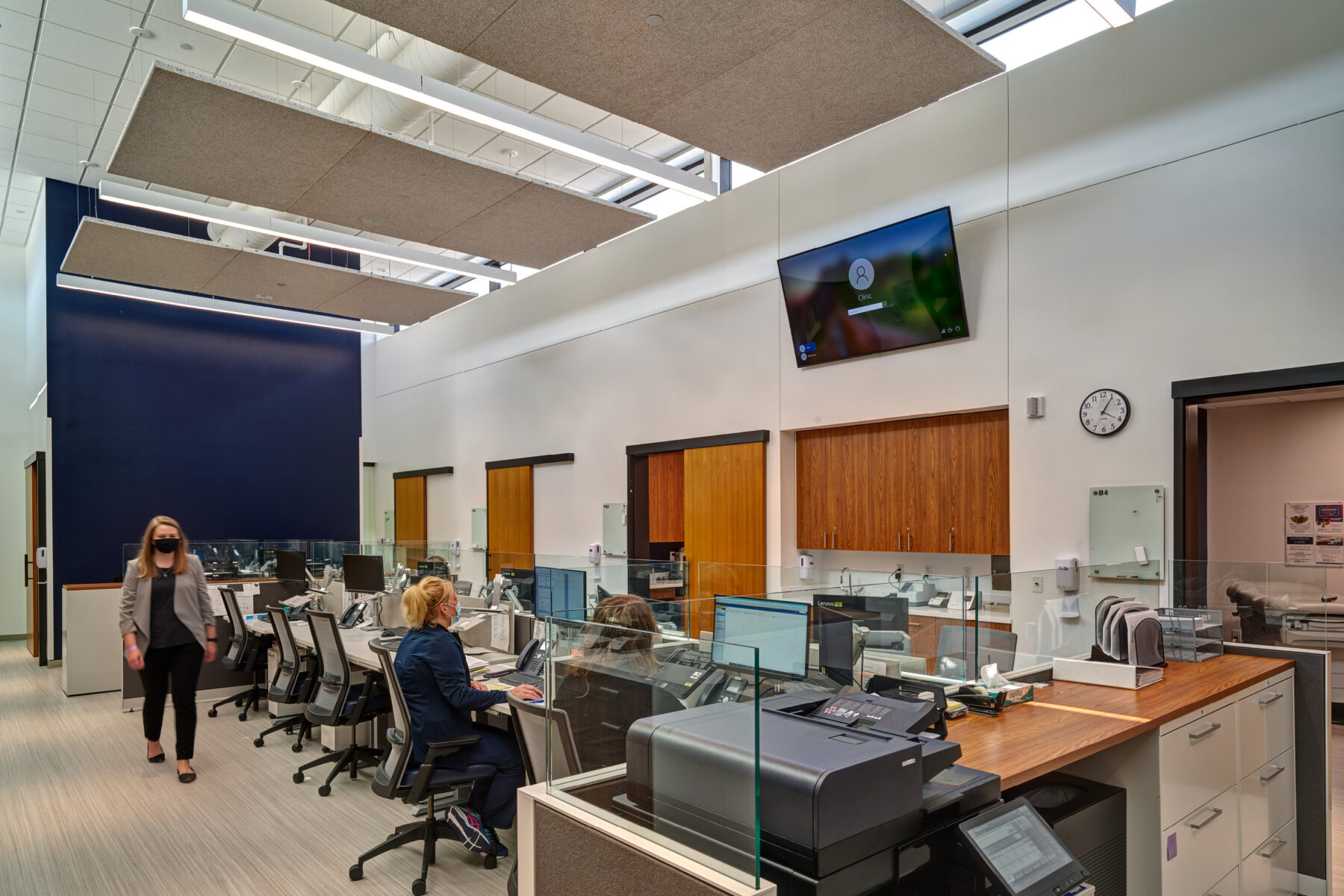
Research has repeatedly shown the positive impact of daylight on mood and overall health. Clerestory windows provide staff workspaces with natural light, promoting productivity and well-being, while acoustic ceiling products ensure an environment that is comfortable and conducive to focused work. Windows are strategically placed throughout the hospital to allow access to natural light without compromising patient privacy.
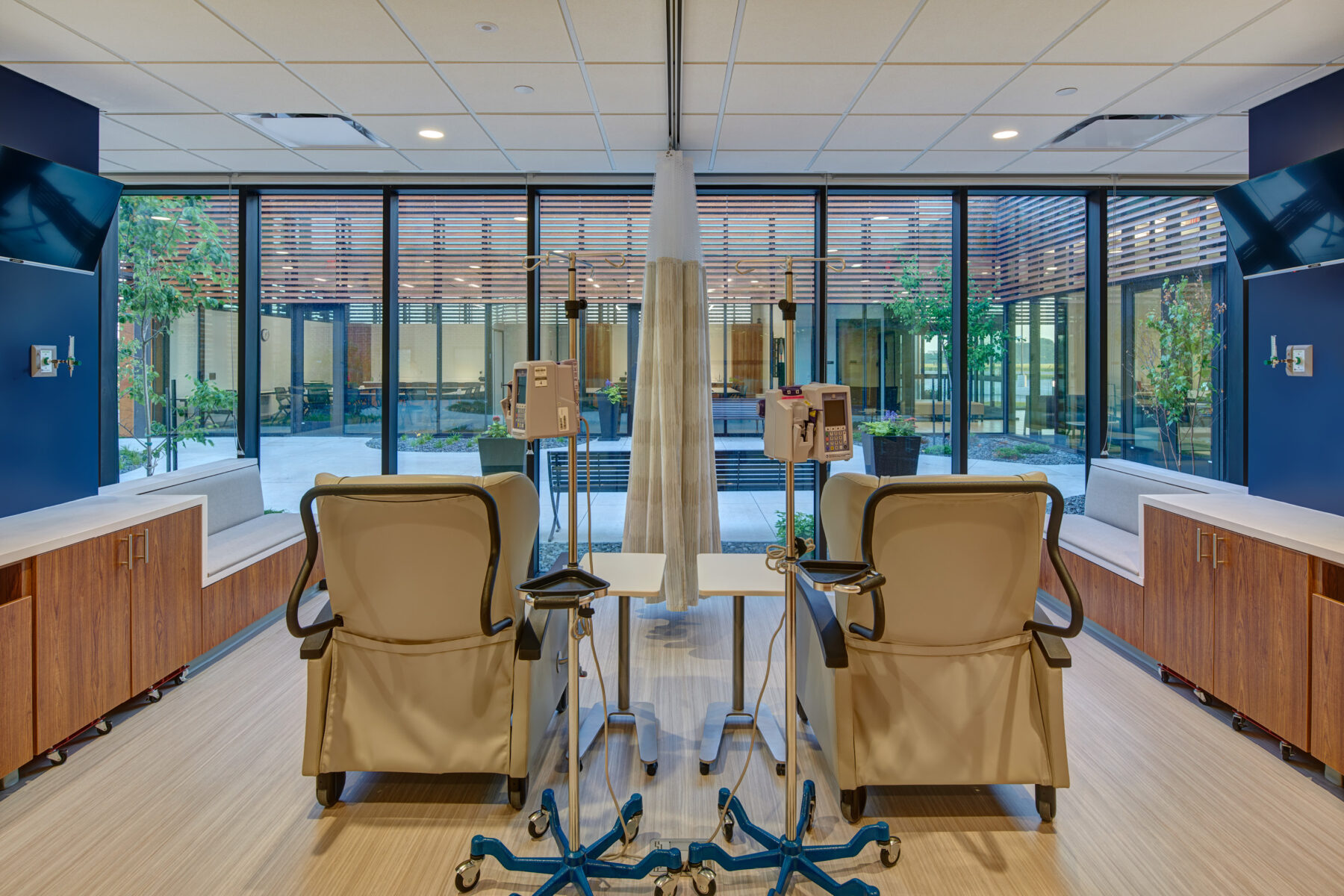
The infusion department, intentionally situated adjacent to a tranquil courtyard, offers extended treatment recipients calming views and ample daylight. The hospital design ensures all visitors have visual, physical, and emotional access to a healing landscape, where the environment becomes a vital participant in the recovery journey.

The exterior of MCHC reflects a commitment to harmony with nature. Wood-based cladding artfully integrates the building into the rural surroundings, and internal wooden louvers act as wayfinding landmarks at pivotal points such as department entrances, registration hubs, and exam modules.
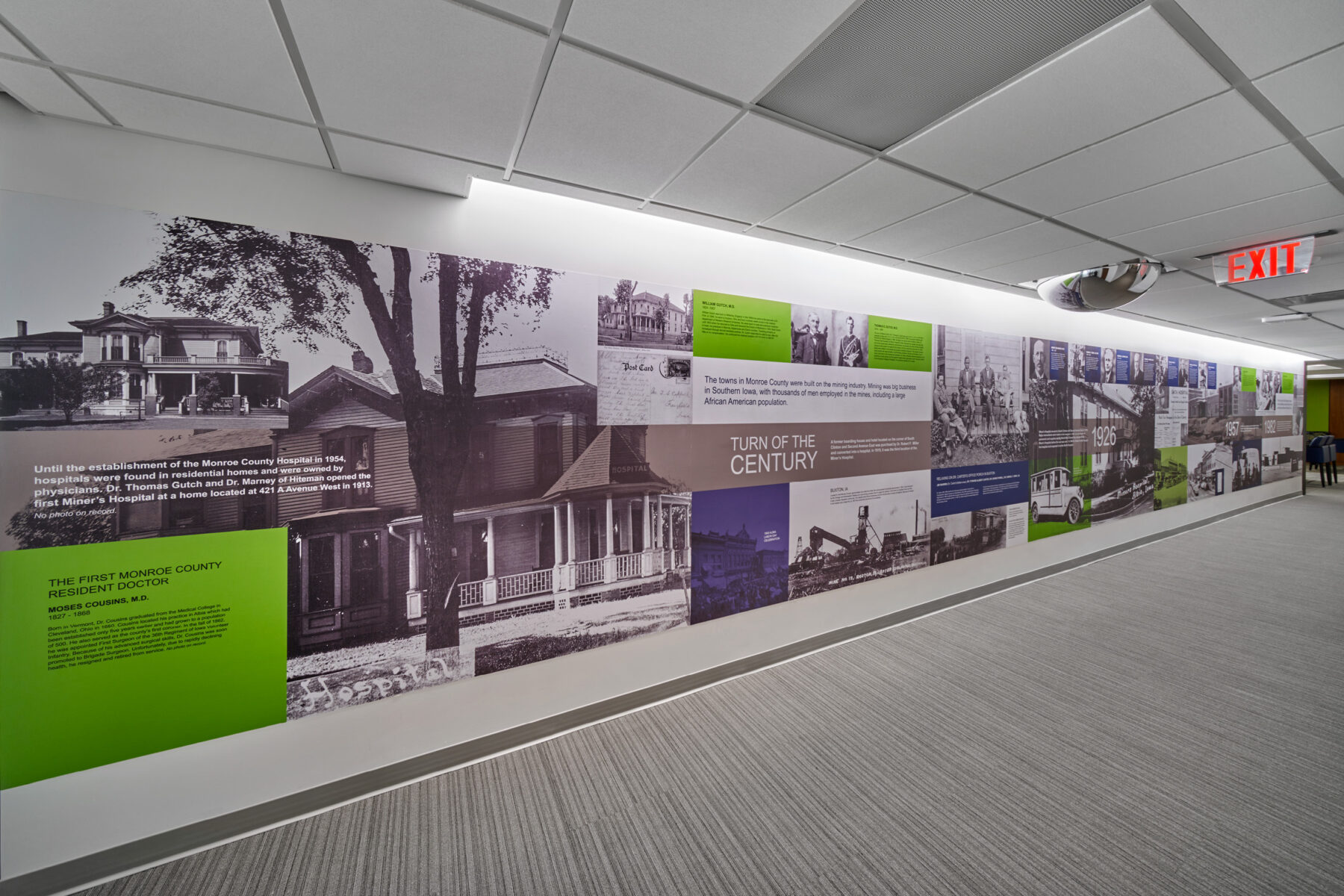
A dynamic mural shows a timeline of healthcare and history in the rural town where the hospital is. It is a powerful reminder of the dedication, resilience, and compassion that paved the path to where MCHC is today, standing as a testament to the unwavering commitment of MCHC to its community.
Kendra Sinclair, Director of RHC Operations, said, “We’ve actually had patients who’ve told us they feel like they’re in a big city. They can’t believe we have this facility here in Albia. The first time it opened, they said this feels like it’s really way ahead of times. It’s very modern, very futuristic. And, you know, I think that now it’s become a calming place with all the natural elements that are here.” She added, “Being able to share in the pride in our community that this fantastic building is, has been a really neat journey for us.”
The impact of a modern hospital extends far beyond the walls of the building itself. A thriving rural hospital serves as the cornerstone of a healthy community. It offers a sense of security to residents, knowing that quality healthcare is readily available. In the case of MCHC, innovative architecture transcended the hospital to become a beacon of hope and a catalyst for a brighter future for healthcare in rural Iowa.